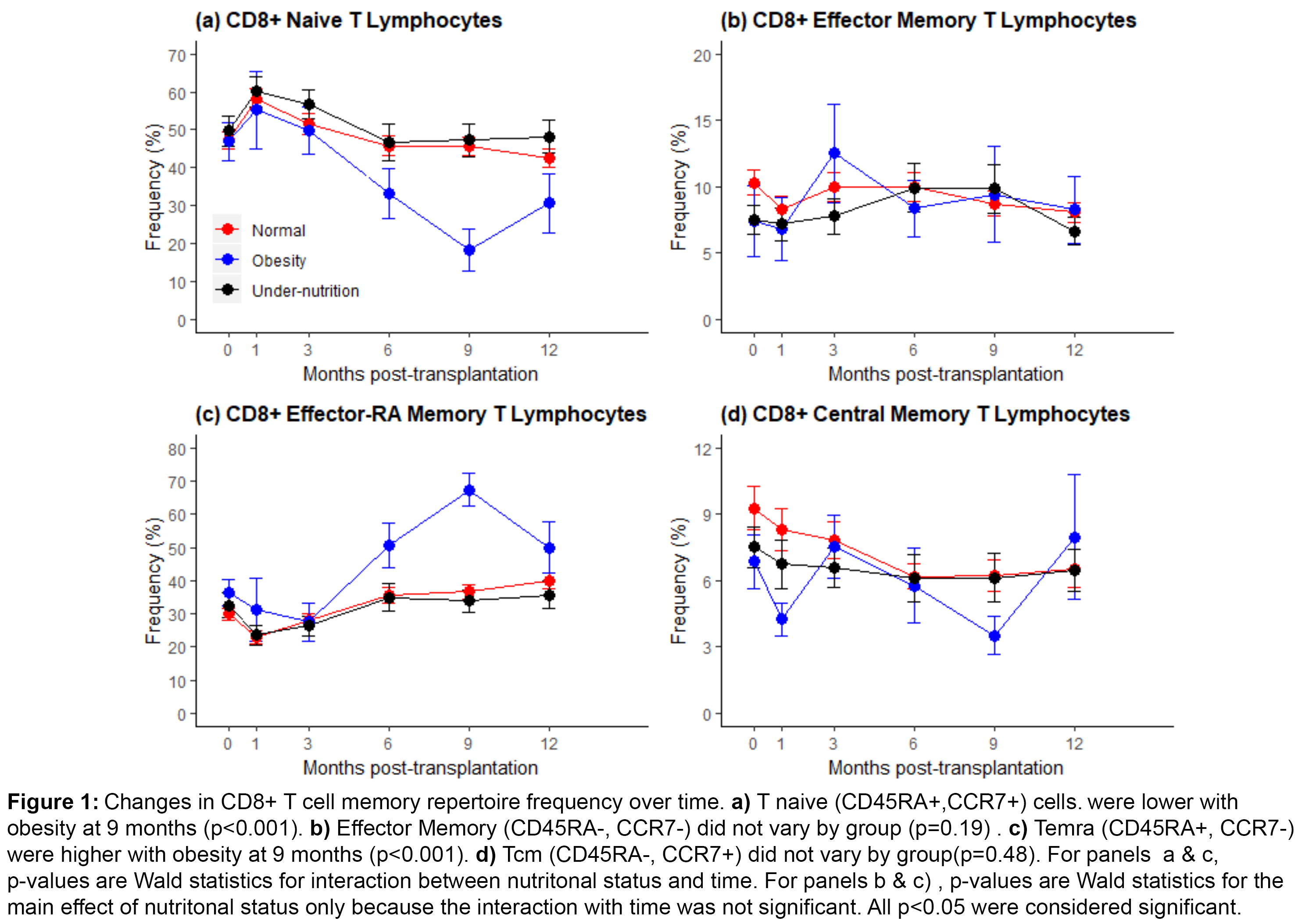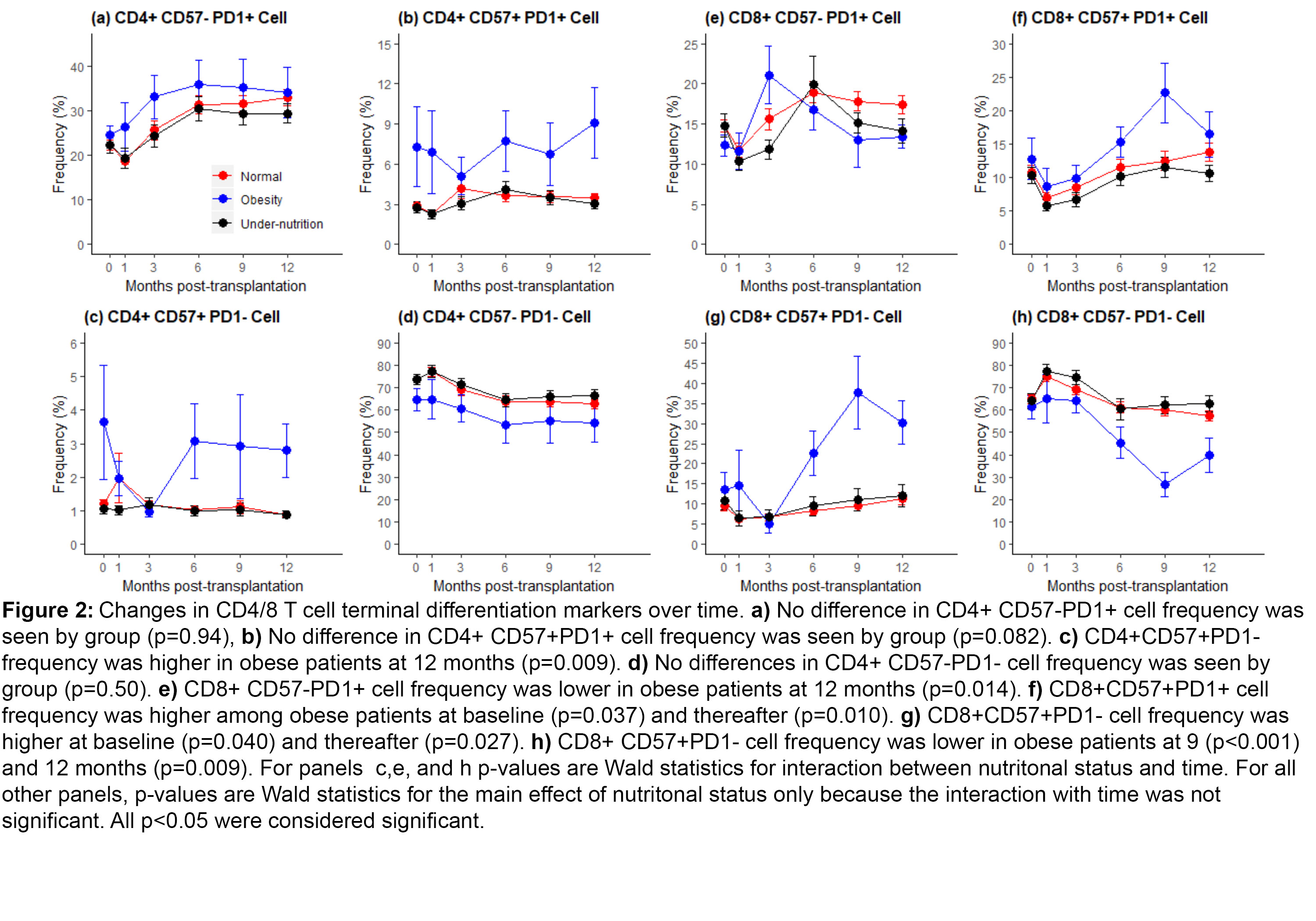Obesity and Terminally Differentiated T Cells in Pediatric Kidney Transplantation
1Surgery, Duke University, Durham, NC, 2Biostatistics and Bioinformatics, Duke University, Durham, NC, 3Pediatrics, University of California, Los Angeles, Los Angeles, CA, 4Pediatrics, Stanford University, Palo Alto, CA, 5Pathology, University of California, Los Angeles, Los Angeles, CA, 6Surgery, University of California, San Francisco, San Francisco, CA, 7Pediatrics, Emory University/Children's Healthcare of Atlanta, Atlanta, GA, 8Surgery, Stanford University, Palo Alto, CA, 9Pediatrics, Duke University, Durham, NC
Meeting: 2020 American Transplant Congress
Abstract number: A-064
Keywords: Co-stimulation, Immunosuppression, Inflammation
Session Information
Session Name: Poster Session A: Kidney: Pediatrics
Session Type: Poster Session
Date: Saturday, May 30, 2020
Session Time: 3:15pm-4:00pm
 Presentation Time: 3:30pm-4:00pm
Presentation Time: 3:30pm-4:00pm
Location: Virtual
*Purpose: Nutritional status is known to modulate immunologic responses in non-immunosuppressed individuals. We utilized the Immune Development in Pediatric Transplantation (IMPACT) study to assess differences in T cell phenotype associated with nutritional status in pediatric kidney recipients.
*Methods: Ninety-eight (98) patients from IMPACT were stratified as having obesity (BMI z-score 2 standard deviations [SD] greater than mean), having normal weight, or being undernourished (BMI, weight- or height-for-age z-score 2 SD less than mean). Memory T Cell markers (CD45RA/CCR7) and markers of terminal differentiation (CD57/PD1) were examined on CD4 and 8 T cells over time by flow cytometry. Differences between groups were determined by generalized estimating equations.
*Results: Of the inlcuded patients, 59% (n=58) had normal weight, 11% (n=11) had obesity, and 30% (n=29) were undernourished. Children with obesity had a significantly higher frequency of CD8+ Temra and a significantly lower frequency of CD8+ T naive cells at 9 months (Figure 1 a&c). These patients had a higher frequency of CD4+ CD57+ PD1- (Figure 2c) and lower frequency of CD8+CD57-PD1+ T cells at 12 months (Figure 2e). Frequencies of CD8+CD57+PD1- and CD8+CD57+PD1+ T cells at baseline and throughout the study were higher among children with obesity (Figure 2g-h).
*Conclusions: Children with obesity undergoing kidney transplant developed a more terminally differentiated T cell repertoire. Given the importance of CD57+ T cells in costimulation blockade resistant rejection, this may have implications for tailoring the use of costimulation blockade based immunosuppression in patients with obesity.
To cite this abstract in AMA style:
Shaw BI, Lee H, Chan C, Ettenger RB, Grimm P, Reed EF, Sarwal M, Stempora L, Warshaw B, Martinez OM, Kirk AD, Chambers ET. Obesity and Terminally Differentiated T Cells in Pediatric Kidney Transplantation [abstract]. Am J Transplant. 2020; 20 (suppl 3). https://atcmeetingabstracts.com/abstract/obesity-and-terminally-differentiated-t-cells-in-pediatric-kidney-transplantation/. Accessed December 29, 2025.« Back to 2020 American Transplant Congress


